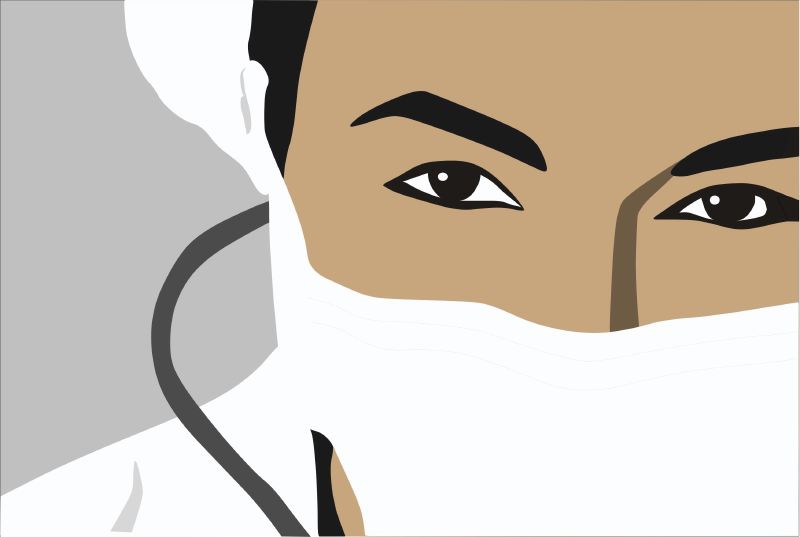
Addressing the incredibly complex problem of physician burnout and poor mental health requires a comprehensive approach that goes beyond individual interventions. As we have described, physician burnout and its accompanying issues is a system problem, and not an individual one.
A physician well-being ecosystem, designed to support and prioritize the mental and emotional well-being of physicians, is crucial for sustainable change. In this blog, we will explore the concept of a physician well-being ecosystem and discuss how such an ecosystem could be cultivated in the context of the United States.
Physician burnout is a multifaceted issue influenced by various factors, including excessive workload, administrative burdens, and a lack of support systems. Burnout can manifest as emotional exhaustion, depersonalization, and a decreased sense of personal accomplishment, ultimately impacting patient care and the overall healthcare system (Shanafelt et al., 2015).
The underlying causes and contributing factors are legion, and we have written articles on many of them:
WORK/SYSTEMIC FACTORS
To effectively address physician burnout, Physicians Anonymous recommend adopting an ecosystem approach that considers the interconnectedness of various elements within the healthcare system and how these impact on physician wellbeing.
A physician well-being ecosystem begins with healthcare organizations fostering a supportive and compassionate culture.
Leadership must prioritize physician well-being, advocating for resources, policies, and practices that promote work-life balance, reduce administrative burdens, and provide adequate staffing (Dyrbye et al., 2017) [2].
Proactive measures, such as wellness programs, mental health support, and resilience training, can also be implemented to address burnout and foster a positive work environment.
Investing in burnout prevention is key: rather than pizza nights and yoga classes (or worse, mandatory resilience classes) we recommend science-based interventions like our Physicians Anonymous Burnout Vaccine.
A burnout vaccine?
Yep.
Available for groups and 1:1, the Physicians Anonymous Burnout Vaccine is a highly economical investment that pays dividends over a physicians career through reduced burnout, absenteeism, medical errors, staff turnover, and compassion fatigue; and enhancing clinician wellbeing, morale, and overall resilience against the stressors of modern medicine.
Adding to physicians’ heavy workloads by yet another training program is not going to work. Instead, we ask that employers provide protected time for their physicians (residents, attendings, med students) to work with us in our bespoke, confidential, burnout prevention coaching program.
Our Burnout Vaccine also includes an optional trojan horse which can pinpoint your major clinical risk areas and sources of clinician distress, as combined with staff-sourced solutions (contact us to find out more).
Addressing the incredibly complex problem of physician burnout and poor mental health requires a comprehensive approach that goes beyond individual interventions.
Physician well-being is closely linked to engagement and collaboration within the healthcare workforce. Encouraging teamwork, fostering open communication, and promoting interprofessional collaboration can help combat burnout.
Collaborative decision-making, shared responsibility, and a sense of belonging within the healthcare team contribute to a supportive ecosystem that nurtures physician well-being (Shanafelt et al., 2017) [3].
Excessive administrative tasks contribute significantly to physician burnout. In the United States, as in many other advanced countries, a physician well-being focus should involve streamlining administrative processes, improving electronic health record (EHR) usability, and minimizing regulatory burdens.
By minimizing non-essential administrative tasks and simplifying documentation requirements, physicians can focus more on patient care, reducing burnout and increasing job satisfaction (Dzau et al., 2018) [4].
To cultivate a robust physician well-being ecosystem, comprehensive support services are essential. This includes safe access to mental health resources, counseling services, and peer support programs.
Encouraging physicians to seek help without stigma and providing confidential and easily accessible resources fosters a culture that prioritizes emotional well-being and offers support in times of distress (Gregory et al., 2019) [5].
Crucially, while the stigma and label of a mental health treatment or diagnosis are potential regulatory, licensing, or career-limiting issues, physicians will remain reluctant to reach out for help.
That is why Physicians Anonymous started up the first physician (and medical student) only, anonymous, doctor-led, peer-support groups, available globally in multiple time zones. Find out more about our meetings here.
The amazing work of the Lorna Breen Heroes Foundation in reforming law and focusing resources on tackling this issue are to be commended.
A physician well-being ecosystem also encompasses ongoing education and training programs. Medical schools, residency programs, and continuing medical education should integrate wellness curricula that address stress management, self-care, resilience, and work-life integration.
Teaching physicians coping strategies and providing them with tools to navigate challenging situations can empower them to better manage the demands of their profession (Shanafelt et al., 2017) [3].
Physicians Anonymous offers a suite of science-based burnout prevention services to hospitals, clinics, medical schools, and residency programs. These virtual or on-site programs reduce burnout and medical errors and enhance resilience, self-confidence, and wellbeing in clinicians. To find out more, please check out our offerings here.
An effective physician well-being ecosystem requires advocacy and policy change at various levels. This includes lobbying for fair reimbursement models, regulatory reforms that prioritize patient care over administrative tasks, and ensuring appropriate work-hour limits to prevent chronic fatigue.
Collaboration between professional organizations, policymakers, and healthcare leaders is necessary to effect meaningful change and create an environment that supports physician well-being (Dzau et al., 2018) [4].
Solving physician burnout necessitates a comprehensive and holistic approach that considers the broader healthcare ecosystem and contributors to physician burnout and unhappiness.
By cultivating a physician well-being ecosystem, encompassing organizational support, workforce collaboration, reduced administrative burdens, holistic support services, education, advocacy, and policy change, we can create a healthier and more sustainable environment for physicians in many countries.
Prioritizing physician well-being ultimately benefits patient care, the healthcare system, and the overall quality of healthcare delivery.
Organizational Support and Leadership:
Dyrbye, L. N., Shanafelt, T. D., Gill, P. R., Satele, D. V., & West, C. P. (2013). Effect of work-home interference on burnout and intent to leave academic medicine. Mayo Clinic Proceedings, 88(11), 1453-1459. [1]
Workforce Engagement and Collaboration:
Shanafelt, T. D., Balch, C. M., Bechamps, G., Russell, T., Dyrbye, L., Satele, D., … & Freischlag, J. (2010). Burnout and career satisfaction among American surgeons. Annals of Surgery, 251(3), 463-471. [2]
Reducing Administrative Burdens:
Sinsky, C., Colligan, L., Li, L., Prgomet, M., Reynolds, S., Goeders, L., … & Murphy, D. (2016). Allocation of physician time in ambulatory practice: A time and motion study in 4 specialties. Annals of Internal Medicine, 165(11), 753-760. [3]
Holistic Support Services:
Schwenk, T. L., Gold, K. J., & Gorenflo, D. W. (2008). Physician suicide. JAMA, 300(18), 2169-2176. [4]
Education and Training:
Dyrbye, L. N., Shanafelt, T. D., Balch, C. M., Satele, D., Sloan, J., & Freischlag, J. (2011). Relationship between work-home conflicts and burnout among American surgeons: a comparison by sex. Archives of Surgery, 146(2), 211-217. [5]
Advocacy and Policy Change:
Dzau, V. J., Kirch, D., & Nasca, T. (2018). To care is human—collectively confronting the clinician-burnout crisis. New England Journal of Medicine, 378(4), 312-314. [6]
Cultural Transformation:
Gregory, B. T., Beck, J., & Carr, A. (2019). Substance use and abuse among physicians: Understanding the barriers to treatment and recovery. Harvard Review of Psychiatry, 27(6), 331-340. [7]
